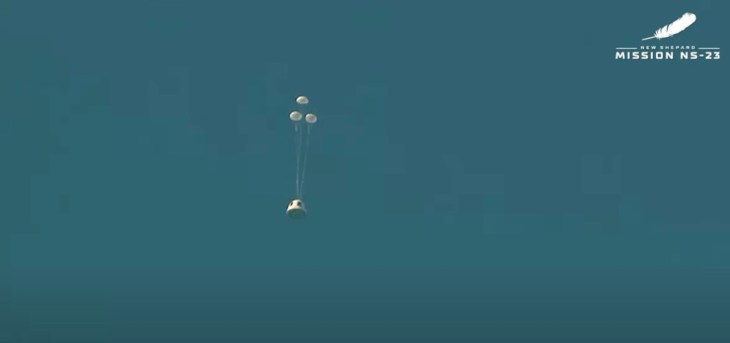Blue Origin launched its 23rd New Shepard rocket mission this morning, featuring science payloads designed for experimentation. The mission needed early, however, after it was aborted during the first ascent stage of the rocket, prompting the abort process to take over and firing the parachutes on the capsule, which drifted back to Earth shortly after take-off.
This was not a crewed mission, so there was no one on board the capsule, though it is the same vehicle that the company uses for its private spaceflight tourist missions. This marks the first time ever that Blue Origin has encountered a problem with the New Shepard spacecraft during a flight, in nearly two dozen missions.
So far, all Blue Origin has said is that an anomaly was detected which resulted in the abort process. The company hasn’t yet specified any details, but the issue occurred during the ‘Max Q’ phase of the launch, which is the point at which the rocket is undergoing the most stress due to atmospheric pressure and friction.
We’ll be looking for updates (Blue Origin says they’re on the way), but the mission does provide a unique test of Blue Origin’s active escape system, which was responsible for the capsule separating and landing apparently safely once the anomaly occurred.
Update: The U.S. Federal Aviation Administration will oversee the investigation into the anomaly, the agency said in a statement just hours after the mishap occurred. Blue Origin will not be prohibited from flying New Shepard until the investigation is concluded.
Blue Origin in a separate statement released a few more details about today’s anomaly, noting that while the capsule escape system successfully fulfilled its function, the booster from which it separated hit the ground. The company added that “all personnel have been accounted for” and there are no reported injuries.
